#prince baltasar carlos
Text

Austrias: Endogamia
#my art#mira it's gotten me 1k twitter likes i might as well post it here#habsburg#felipe iv#carlos ii#felipe ii#charles v#margarita maria#maria teresa#mariana de austria#margarita de austria#felipe iii#felipe prospero#baltasar carlos#don carlos prince of asturias
112 notes
·
View notes
Text

Portrait of Mariana of Austria
Artist: Diego Velázquez (Spanish, 1599-1660)
Genre: Portrait
Depicted People: Mariana of Austria, Queen of Spain
Date: 1652–1653
Medium: Oil on Canvas
Collection: Museo del Prado, Madrid
Portrait of Mariana of Austria is a 1652–1653 oil-on-canvas painting by Diego Velázquez, the leading artist of the Spanish Golden Age, existing in a number of versions. Its subject, Doña Mariana (known as Maria Anna), was the daughter of Emperor Ferdinand III and Maria Anna of Spain. She was nineteen years old when the painting was completed. Although described as vivacious and fun-loving in life, she is given an unhappy expression in Velázquez's portrait. The portrait is painted in shades of black and red, and her face is heavily made up. Her right hand rests on the back of a chair, and she holds a lace handkerchief in her left hand. Her bodice is decorated with jewelry, including a gold necklace, bracelets and a large gold brooch. A clock rests on scarlet drapery behind her, signifying her status and discernment.
Mariana had been betrothed to her first cousin, Prince Baltasar Carlos. He died in 1646 aged sixteen, and in 1649 she married her uncle, Baltasar Carlos's father, Philip IV, who sought her hand so as to preserve the hegemony of the Habsburg dynasty.[A] She became queen consort on their marriage, and after her husband's death in September 1665, regent during the minority of her son, Charles II, until he came of age in 1675. Owing to Charles' inhibiting physical weaknesses, she dominated the political life in Spain until her death in 1696.
#portrait#mariana of austria#queen of spain#diego velazquez#17th century art#spanish royalty#spanish culture#17th century spain#lace handkerchief#jewelry#gold necklace#bracelets#gold brooch#drapery#spanish monarchy#spanish nobility
11 notes
·
View notes
Photo
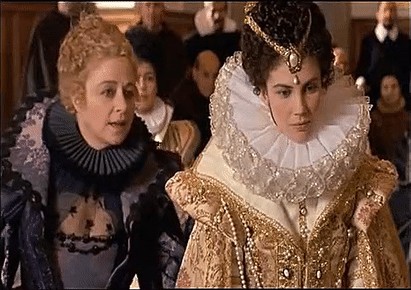
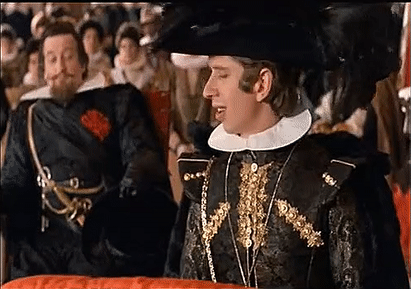



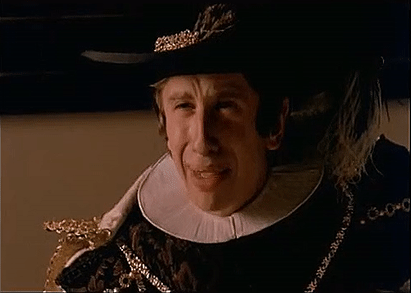

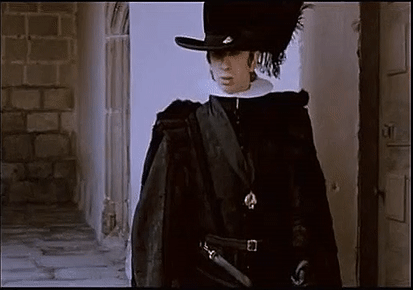
Philip IV of Spain and Elisabeth of France
When Elisabeth of France, the eldest daughter of King Henri IV and Marie de Medici, arrived at the Spanish court, Elisabeth under went significant change from a carefree young girl to a serious politician in her own right, acquiring political experience that would serve the crown well during the last years of her life. As the political situation grew more complicated, Elisabeth responded competently to the important matters that Philip IV gradually began to delegate to her. Elisabeth of France’s period of governance came at a crucial moment for the Spanish Monarchy, from 1642 to 1644, when it was undergoing an intense economic, military, and political crisis. At this same time, the king’s favourite and minister Count-Duke of Olivares fell from power,creating a vacuum that the queen hurried to fill, and her political influence notably increased after January 1643.
Even though the power she wielded was necessarily delegated by Philip IV, in times of political crisis, her role crucially influenced the Spanish government. While Olivares’s fall had facilitated her assuming this role, it was the queen’s extraordinary political skills and, in particular, her success in negotiating financial support and military maneuvers that proved she was equal to the task of governing in the king’s absence. The first time the queen had been given power were the years 1626 and 1632, when the king left Madrid to summon the Cortes or Parliaments of Aragon, Valencia, and Catalonia.
In August 1627, the queen’s role took on greater importance, as the king became seriously ill, precipitating one of the most critical moments of his reign. Given what seemed to be the likelihood of his death, Philip wrote a will and testament according to which Elisabeth, who was pregnant at the time, would become regent until the unborn child, if a son, would reach majority. If a daughter, she was to marry her paternal uncle, the infante Carlos, and the couple would inherit the crown. The king recovered the first week of September.
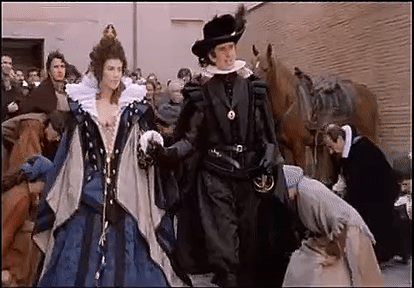
The revolt of Catalonia, which began on June 7, 1640, was followed by the revolt of Portugal in December that same year. These unprecedented rebellions within the Iberian peninsula coincided with other armed conflicts through out Europe in which Spain participated. France had declared war on Spain just five years earlier, and since then, Philip IV had mentioned several times that he wished to go to the battlefront. News that Louis XIII had visited the French troops in March 1642 caused Philip to visit his as well. He departed from Madrid in April 1642, leaving Elisabeth and her son, Baltasar Carlos, in tears. In addition to her activities with the Junta de Gobierno, the queen attended council meetings and royal ceremonies in the company of Baltasar Carlos, who had just turned thirteen. Her actions as head of government served as an example to the young prince. The queen took charge of the government for nearly eight months, until the king returned in early December.
Elisabeth had two main concerns during her final year as governor: first, she had to find the monies to supply the armies fighting both the Catalonian rebels and the French; and second, she had to secure funds for the defense of the Portuguese border. In both cases she was assisted by Chumacero, the Council president, with whom she consulted daily. Thanks in part to her efforts, the army at long last achieved several victories in 1644. Philip and Elisabeth wrote to each other regarding government affairs, just as Charles V and Empress Isabel had done a century earlier. Elisabeth of France retained an active role in governance until September 1644, when the first symptoms of erysipelas, the disease that would eventually lead to her death, first appeared. A few days after his wife’s death, in a letter to the queen’s close friend, the Countess of Paredes, the king wrote,
“Countess, you may judge how I have reached this point; in one day I have lost my wife, my friend, my helper and counselor in all my labors. Surely I must be made of bronze, for I have not lost my mind or my life.”
Source:
Alejandra Franganillo Álvarez, Isabel de Borbón and the Governance of the Spanish Monarchy
#Philip IV of Spain#Felipe IV de España#Isabel de Borbón#Elisabeth of France#couples in history#Spanish history
52 notes
·
View notes
Text

Prince Baltasar Carlos on Horseback
Diego Velázquez
oil on canvas, ca. 1635
#Diego Velázquez#art#artist#painter#Prince Baltasar Carlos on Horseback#oil on canvas#ca. 1635#painting
35 notes
·
View notes
Photo

Baltasar Carlos, Prince of Spain and Son of Philip IV, Francisco José de Goya y Lucientes, 18th-19th century, Harvard Art Museums: Prints
Harvard Art Museums/Fogg Museum, Gray Collection of Engravings Fund
Size: sheet: 59.4 x 41.6 cm (23 3/8 x 16 3/8 in.) plate: 34.8 x 22 cm (13 11/16 x 8 11/16 in.)
Medium: Etching on cream antique laid paper
https://www.harvardartmuseums.org/collections/object/277866
11 notes
·
View notes
Text

Portrait of Prince Baltasar Carlos with a dwarf (El príncipe Baltasar Carlos con un enano)
Diego Velazquez 1631
Arthive
8 notes
·
View notes
Photo

Prince Baltasar Carlos with the Count Duke of Olivares at the Royal Mews, 1636, Diego Velázquez
Medium: oil,canvas
https://www.wikiart.org/en/diego-velazquez/prince-baltasar-carlos-with-the-count-duke-of-olivares-at-the-royal-mews
12 notes
·
View notes
Photo

Portrait of Prince Baltasar Carlos, Son of the Spanish King Philip IV, at approximately 11 years of age, Museum of the Netherlands
Portret van prins Balthasar Carlos, zoon van de Spaanse koning Philips IV, op ongeveer elfjarige leeftijd. Staand, ten voeten uit in wapenrusting, commadostaf in de rechterhand, rechts van een stoel.
http://hdl.handle.net/10934/RM0001.COLLECT.9026
15 notes
·
View notes
Text

Prince Baltasar Carlos with the Count-Duke of Olivares at the Royal Mews, Diego Velázquez, 1636
#art#art history#Velazquez#Diego Velazquez#portrait#portrait painting#equestrian portrait#Spanish Golden Age#Siglo de Oro#Baroque#Baroque art#Spanish Baroque#Spanish art#17th century art#children in art
31 notes
·
View notes
Photo

Isabel de Borbón, reina consorte de España (c.1620). Rodrigo de Villandrando (Spanish, 1588-1622). Oil on canvas. Museo del Prado.
The daughter of Henri IV of France and Marie de Médicis, Isabel de Borbón (1603-1644) was the first wife of Philip IV and the mother of Prince Baltasar Carlos and María Teresa of Austria. In Villandrando’s portrait, painted a year before Isabel became Queen of Spain, she wears a stiff, sumptuous dress that emphasises her presence and royal status. Although Spanish in cut, the colours of the dress are those of the Portuguese court -gold brocade over a white background- at that date under Spanish rule.
56 notes
·
View notes
Photo








ESPAÑOL- Una de las habitaciones que mas me a gustado hacer en mi versión de El Alcázar de los Austrias en el que estoy trabajando, “El Salón de Reinos”.
Aunque este salón no estaba en el Alcázar sino en el Palacio del Buen Retiro, del que solo queda este salón, que ahora formara parte de el Museo del Prado de Madrid, he decidido ponerlo.
El Salón esta decorado con lienzos que representan las victorias de los Ejércitos de los Tercios Españoles al principio del reinado de Felipe IV de España, tales como “La recuperación de Bahía de Todos los Santos” de Juan Bautista Maíno, “ La Defensa de Cádiz contra los ingleses “ de Francisco de Zurbarán o “La rendición de Breda” o “Las lanzas” de el GRAN Diego Velázquez.
Sobre las ventanas y las puertas de los muros largos están los Trabajos de Hércules pintados por Francisco de Zurbarán. Y en los muros cortos los Retratos de Felipe III a Caballo, La reina Margarita de Austria a caballo, Felipe IV a Caballo, La reina Isabel de Francia a caballo y El Príncipe Baltasar Carlos a Caballo, todos de Diego Velázquez.
Faltaría la característica que daba nombre al salón, los 24 escudos de los territorios de la Monarquía Hispánica en tiempos de Felipe IV, buscare algo que me sirva para poder crearlo.
He de dar las Gracias a TheJim07 que me ha dado permiso para usar sus cuadros para la creación de mis cuadros.
Por cierto, todos estos cuadros se conservan en el Museos del Prado de Madrid.
Espero que os guste.
ENGLISH- One of the rooms that I liked the most in my version of El Alcázar de los Austrias in which I am working, “El Salón de Reinos”.
Although this room was not in the Alcázar but in the Buen Retiro Palace, of which only this room remains, which is now part of the Prado Museum in Madrid, I have decided to put it.
The Hall is decorated with canvases that represent the victories of the Armies of the Spanish Tercios at the beginning of the reign of Felipe IV of Spain, such as "The recovery of Bahía de Todos los Santos" by Juan Bautista Maíno, "The Defense of Cádiz against the English "by Francisco de Zurbarán or" The surrender of Breda "or" The spears "by the GREAT Diego Velázquez.
Above the windows and doors of the long walls are the Works of Hercules painted by Francisco de Zurbarán. And on the short walls are the Portraits of Felipe III on Horseback, Queen Margarita of Austria on Horseback, Felipe IV on Horseback, Queen Isabel of France on Horseback and Prince Baltasar Carlos on Horseback, all by Diego Velázquez.
The characteristic that gave the room its name would be missing, the 24 shields of the territories of the Hispanic Monarchy in the times of Felipe IV, I will look for something that will help me create it.
I have to thank TheJim07 who has given me permission to use his paintings for the creation of my paintings.
By the way, all these paintings are kept in the Prado Museum in Madrid.
I hope you like it.
#thejim07#felixandresims#the-regal-sim#17century#barroque#historical#historicasims#alcazar#museodelprado#spain#Empire#madrid#tercios#historicalsims
19 notes
·
View notes
Text
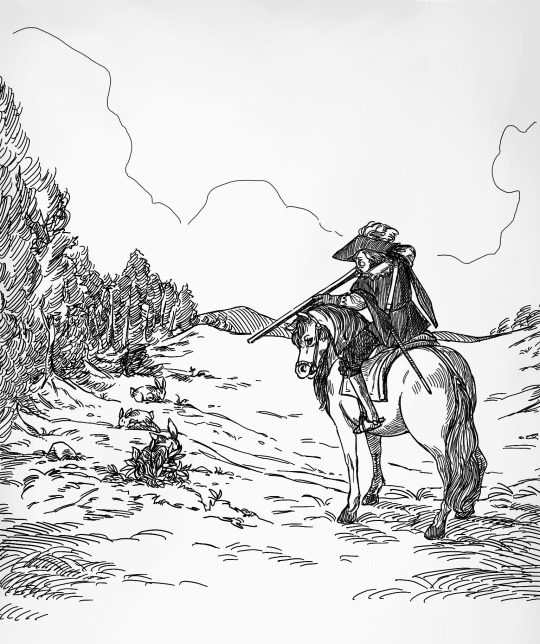
Homage to María Eugenia de Beer, engraver at the Spanish court - from Exercicios de la gineta al Principe nuestro señor D. Baltasar Carlos / Horse-riding Exercises Dedicated to Our Prince Balthasar Charles by Gregorio de Tapia y Salcedo (1643) ⬇️
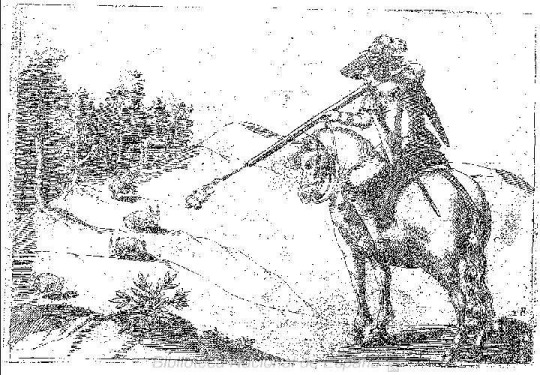
#this is my copy of her nice engravings in that book! the reproduction quality isn’t crazy so you have to use a bit of#imagination in the originals.. sooo… i thought why not do just that#!!!#my art#felipe iv#the original is of course 1643 but i have set mine more around 10y later?#i DO like the awkward intermediary phase in spanish fashion#between short and long hair where they just have these puffy jaw length haircuts#very round#but still. 1650s my beloveds#ah yes and the guys in the engravings are (i assume) just generic gentlemen and not in fact philip iv lmao#but i mean you know me
21 notes
·
View notes
Photo

Prince Baltasar Carlos in the Riding School Spain circa 1640-45, studio of Diego Velázquez
1 note
·
View note
Photo

Spanish Golden Age painter, and leading artist in the court of King Philip IV, Diego Velázquez was born #onthisday 1599.
This portrait, painted in 1633, depicts Prince Baltasar Carlos, the son of Philip IV of Spain and Isabel de Bourbon. Idolised by his parents, Baltasar Carlos died of fever aged sixteen. Here he is shown aged about three years old, his pose repeated from a portrait of the prince painted to commemorate his investiture the year before at the Buen Retiro.
The prince’s silver costume shimmers as a result of Velázquez’s characteristic brushwork, with its simple composition typical of paintings after his first trip to Italy (1629 – 31). Although he paid a ‘prodigious price’ for the picture (1,600 guineas), the 4th Marquess of Hertford seemed well pleased with his purchase when he saw it in 1855, writing to his agent Samuel Mawson that ‘the Velázquez is beautiful.’
(with thanks to the wallacecollection)
5 notes
·
View notes
Photo

Juan Bautista Maíno
Portrait of Fray Alonso de Santo Tomás, c. 1648-49
Museu Nacional d'Art de Catalunya, Barcelona (Inv. No. 024370-000)
THE KING’S BASTARD
Friar Alonso de Santo Tomás (1631–1692), born as Alonso Enríquez de Guzmán y de Orozco, was an illegitimate son of King Philip IV of Spain with Constanza de Ribera y Orozco, a lady-in-waiting of Queen Élisabeth of France, who was rapidly married to José Enríquez de Guzmán, gentleman-in-waiting of the King. Alonso became an orphan at the age of 3, and was raised by his adoptive father’s brother, Antonio Enríquez de Guzmán y de Porres, Bishop of Málaga and later Viceroy of Aragón.
In 1646 Baltasar Carlos, Prince of Asturias and only male heir apparent to the Spanish throne, died aged 16. Philip IV, devastated after his loss, intended to legitimize Alonso and to welcome him at court. The youth, surprisingly, refused those honors, and decided to take holy orders, becoming a Dominican friar in 1648.
Nevertheless Friar Alonso didn’t lose the royal favor of Philip IV, and by 1661 was named Bishop of Osma, two years later Bishop of Plasencia, and finally Bishop of Málaga (1664–1691). Friar Alonso was highly regarded as a theologian and orator, he published several theological essays and became a generous patron of the arts, protecting artists such as the sculptors Pedro de Mena and Alonso Cano. His portrait by Maíno was probably commissioned soon after he entered the Order, and is one of the painter’s last works.

• Details of a portrait of King Philip IV of Spain, aged 18-19 (Velázquez, c. 1623-24) & his son, Alonso de Santo Tomás, aged 17-18.
#art#painting#history#art history#portrait#juan bautista maino#baroque#baroque art#baroque painting#17th century#1640s#17th century art#spain#spanish art#spanish painting#spanish baroque art#felipe IV#philip IV#philip IV of spain#spanish monarchy#religion#catholicism
166 notes
·
View notes
Photo

Baltasar Carlos, Prince of Spain and Son of Philip IV, Francisco José de Goya y Lucientes, 18th-19th century, Harvard Art Museums: Prints
Harvard Art Museums/Fogg Museum, Gray Collection of Engravings Fund
Size: sheet: 59.4 x 41.6 cm (23 3/8 x 16 3/8 in.) plate: 34.8 x 22 cm (13 11/16 x 8 11/16 in.)
Medium: Etching on cream antique laid paper
https://www.harvardartmuseums.org/collections/object/277866
10 notes
·
View notes